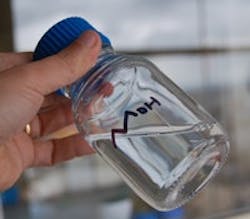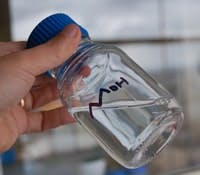Ethanol Conversion Gets Boost
Bio-based butanol is attracting increasing interest as an alternative to ethanol for blending with gasoline. Butanol provides more energy per gallon and avoids ethanol's corrosiveness and water absorption problems. Existing plants that transform renewable feedstocks into ethanol by fermentation can be modified to make butanol instead but this can be costly. Now, researchers at the University of Bristol, Bristol, U.K., have come up with a simpler and cheaper solution — using highly selective catalysts they have developed to convert the ethanol into n-butanol.
Figure 1. New catalysts provide high selectivity in converting ethanol to n-butanol. Source: University of Bristol.
"Butanol is much better. It contains about 30% more energy per gallon than ethanol, is easier to handle, and more of it can be blended into each gallon of gasoline. In fact, you could fuel a car on pure butanol and it would run absolutely fine," notes Duncan Wass, a professor of catalysis at the university's dept. of chemistry and a member of the research team.
"These new catalysts are much better than any previously in existence," he says. "There's a long way to go before they are commercialized, but we are reporting a fundamental advance in that direction. Quite simply, they are the world's best catalysts for making the gasoline of the future."
The ruthenium-based catalysts boast unparalleled and extremely high selectivity for making n-butanol — over 94% — at more than 20% conversion.
Key challenges remaining to be addressed are catalyst robustness and process scale-up, notes Wass.
"We are working on new catalysts as well as optimization and a more-detailed understanding of our current system… The more-scientific study should take 12–18 months. Optimization in terms of scale-up to a commercial-scale trial will take a lot longer — my experience is at least five years even if everything works well."
Scale-up studies will investigate issues such as how many cycles the catalyst can withstand as well as its susceptibility to poisoning.
"In a continuous process, there is no reason why [yield] shouldn't approach 100%. In a batch process, there is always the compromise between conversion and selectivity," says Wass.
BP, London, provided funding for the research and continues to collaborate on the development.

